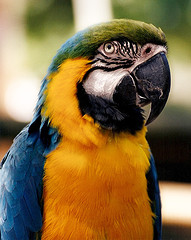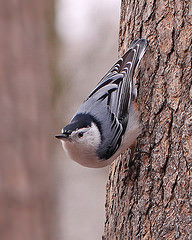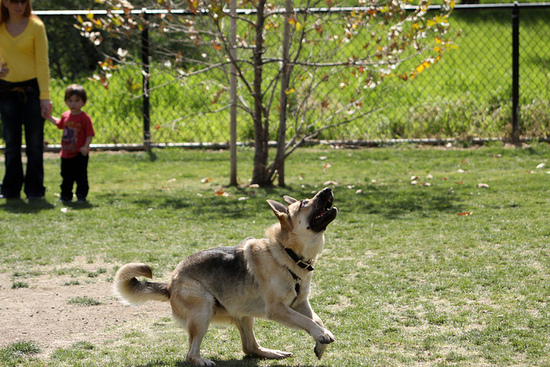In 2012, CBC Radio's This is That program reported on a controversial new bylaw: dogs in Montreal would be required to understand both French and English. Chaos was reigning in the city's dog parks, and confusion in communication was the cause. With some dogs responding to English commands and other to French, mandated dog bilingualism was the only solution to the problem, said a city official.
Or, rather, a fake city official. The story managed to fool many twitter users and even some legitimate news sites, but it was a parody; This is That regularly fabricates stories to comment on current events. Good thing, too, because as a monolingual English speaker, there's no way I could keep up if even dogs had to understand both languages. It seems ridiculous so many people were taken in by the notion, if only because animals can't be bilingual.
Or can they?
Parrots have long been admired as intelligent pets able to mimic human speech. Individual parrots have been learning multiple languages for centuries, and ads in Paris from the late 1700s often boasted bilingual parrots for sale. One particularly spirited bilingual parrot, Millie, dazzled (and then shocked) attendees of Expo 67 with her fluency in French and English, particularly her expansive bilingual knowledge of curse words.
 However, parrots are not actually fluent in human language the way we define fluency. A parrot can't learn grammar the way we can, and it can't grasp the meaning of abstract concepts. When a parrot is speaking to us, it's simply using sounds that have been associated with certain actions.
However, parrots are not actually fluent in human language the way we define fluency. A parrot can't learn grammar the way we can, and it can't grasp the meaning of abstract concepts. When a parrot is speaking to us, it's simply using sounds that have been associated with certain actions.
This isn't to say a parrot's ability to speak isn't a sign of intelligence--it still is impressive that they are able to learn our dialects at all. A parrot that says suppertime to you when you bring it food has managed to connect that specific sound to the arrival of food, and then has been able to make that sound back to you in multiple contexts; it knows to request food and acknowledge food with that sound. Supposedly bilingual parrots do the same, but with multiple languages.
How strange parrots must think we are, to have such different words for the same things!
So if parrots aren't truly bilingual, are any animals? Is it even possible for animals to be truly bilingual?
Finches are among the numerous species of birds to demonstrate what is effectively bilingualism. They are able to learn the calls of other birds not only to mimic, but to understand and use--just like a human learning a second language. Nuthatches are able to decipher the complex calls of chickadees--a bird they're not closely related to--down to knowing  the exact difference between a large-predator and small-predator warning, and are able to react appropriately to each. Wrens have been observed eavesdropping on the calls of other birds and understanding them.
the exact difference between a large-predator and small-predator warning, and are able to react appropriately to each. Wrens have been observed eavesdropping on the calls of other birds and understanding them.
These findings are extremely important in the study of how human language developed. Humans communicate in ways no other species on Earth does, and it seems obvious to assume that bilingualism developed after language. The ways these birds communicate, however, suggests the opposite: the capacity for learning multiple modes of communication in humans likely evolved before lexical (language based) bilingualism was even an idea.
It's fascinating how complex language and communication are. To a finch, or a nuthatch, or a wren, being able to learn and use other birds' calls is often a matter of life or death, and so they've evolved to be bilingual. Knowing birds are showing me up in bilingual fluency is a bit embarrassing--time to get back to practicing my own bilingualism!

Leave a comment